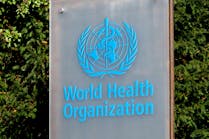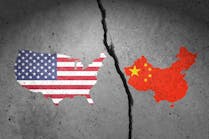Ongoing pandemic, lingering supply chain aftershocks press GPOs, IDNs
Healthcare organizations – either providers or suppliers – maintain something of a love-hate relationship with group purchasing, regardless of who provides the service.
At core they acknowledge the appeal, efficacy and usefulness of the concept of “cooperative buying,” the original name for this practice of multiple facilities bundling their collective buying volume to generate discounts that debuted in 1910.
But some express a distaste for how “cooperative buying” evolved into what we know as group purchasing today, homing in on the various financial and operational business models that really didn’t exist seven decades ago when the nascent but developing industry segment was dominated by local (city and county) and state hospital associations rather than privately held and investor-owned corporations. This development, merely an extension of the service-mindedness and entrepreneurial spirit of William V.S. Thorne who launched the forerunning New York-based Hospital Bureau of Standards & Supplies Inc., spawned a bevy of entrepreneurial opportunists who redefined, if not stretched the definition of, the group purchasing concept into the variety of business models today. These models are practiced largely by eight independent “parent” group purchasing organizations (GPOs) and scores of integrated delivery networks (IDNs) that emerged during the mid-to-late 1990s.
While this blossoming industry segment would face pockets of reform measures from federal and state regulators throughout the 1960s and 1970s, ultimately culminating in a “managed care” victory for the payer industry in the early 1980s, it would face perhaps its toughest challenges during the Clinton Administration’s considerable healthcare reform initiative in the 1990s. This initiative seemed to empower the investor-owned hospital companies that functioned as their own GPOs and ignited a fire under hospitals in general to coalesce in myriad smaller collectives known as integrated delivery networks (IDNs) as both a short-term defensive tactic as well as a long-term offensive strategy in the name of competition.
But the global COVID-19 pandemic, now entering its third year, perhaps provided the toughest challenge to date – a virus that expanded quickly and exponentially ignited product demand with such an intensity that it rapidly outpaced the ability to manufacture as well as distribute supplies.
Resiliency calls for multi-diversity
One of the lessons the pandemic has taught healthcare providers and suppliers is about the inherent and relative fragility of the supply chain. GPOs and IDNs may have established manufacturer and distributor contracts, but when demand outpaces supply to the point that backorders, diminished resources and shortages become routine, hospitals and other healthcare organizations simply have to make other arrangements. This may involve invoking force majeure clauses on existing contracts, but also sourcing from alternative suppliers. GPOs and IDNs both recognize this and pivoted as creatively and quickly as possible.
But the question remains as to how GPOs and IDNs will accommodate this new reality? And what infrastructure changes will need to be established bob and weave through some major crisis or disaster to come?
“Overall, the healthcare industry needs increased collaboration and a willingness for transparency,” she said. “Supply chain resiliency and supply assurance cannot be achieved with participation from just one or two stakeholders. It requires alignment to data standards and a willingness for two-way transparency across providers, distributors and suppliers. GPOs can facilitate increased transparency, information sharing and enforce data standards.”
Steele acknowledges that providers will pursue product wherever they can when demand spikes. But she argues that one element may surpass diversifying suppliers.
“Providers will always look for alternative suppliers during times of significant supply constraints; however, conservation strategies have certainly risen to the top of the list for mitigating disruption,” she noted. “It’s important that providers employ a strategy that diversifies manufacturing locations, which is not necessarily supplier diversification. Most providers aren’t interested in having multiple suppliers for a particular product. The stress of change management and training is costly. In a crisis, supply availability certainly becomes the priority, but stress on the organization on top of labor shortages must remain top of mind as well.”
The supply chain needs to bend without breaking, according to Cory Turner, CMRP, Senior Director, Healthcare Strategy, Tecsys Inc.
“The fragility of any supply chain lies in how flexible or inflexible it is,” he observed. “If disruptions cause fractures, your supply chain needs to be reimagined, but if the disruptions cause stretch marks, it means you’re doing something right.
“The most probable infrastructure changes among IDNs are that they simply accelerate the diversification strategies that they have already begun,” Turner continued. “In what’s likely a hybrid approach, IDNs ought to consider multiple GPOs combined with self-distribution. This will call for leadership and a maturation of internal sourcing strategy on the IDN side. By employing a diversified approach, IDNs design in more resiliency, which avoids drastic measures like force majeure.”
Think local, Turner encourages.
“A focal point for strategic sourcing, both on the IDN and GPO side, should be to see where they can shorten their supply chains,” he indicated. “That translates to business with more local manufacturers, and possibly investing in vertical integration for better control over certain goods. The fewer the links, the less opportunity for kinks in the chain.”
It may be time to rethink what’s been done before, not necessarily because it backfired during a crisis but that it may not have gone far enough, according to Tom Redding, Senior Managing Director, Healthcare Services, St. Onge Co.
“Over the last decade, there has been a significant push across the industry to streamline the sourcing/contracting through the GPO, which has allowed the health systems to run ‘lean’ on internal teams while reaping the financial benefits,” he observed. “I believe organizations will start to challenge their existing thinking on the use of a GPO and further develop the internal capability to ensure the organization is able to quickly adapt to backorders and supply chain disruptions. I anticipate greater pressure from the GPOs and IDNs on the manufacturers to provide better inventory visibility to ensure the organization has the appropriate amount of supply chain risk. GPOs and IDNs will need to think beyond the ‘price only’ and understand the complete supply chain picture to assess their risk.”
This doesn’t forecast the death of or doubts about GPOs, however.
“We anticipate there will be a slight uptick in ‘inventory buffering’ across health systems as they contend with not having inventory visibility and transparency from the manufacturers,” Redding clarified. “With all of the state mandates on PPE, health systems are starting to understand that managing risk is part of their new reality. Prior to the pandemic, there was an inherent trust that manufacturers had their back and would be ‘ready to serve’ at a moment’s notice.
“Creating a strategic supply chain master plan is critical to ensure the organization can proactively assess, plan, execute and improve the delivery of its services. We anticipate more attention will be spent to further integrate the entire supply chain from sourcing/contracting through to the delivery of supply chain services to the customers,” he added.
GPOs must remain steadfast in their commitment and partnership with members and continuously innovate to meet goals, according to Jeff Ashkenase, Group Vice President, End-To-End Supply Chain, Nexera, a subsidiary of Premier, Inc.
“In a [crisis] situation like we’ve encountered over the last two years, when demand outpaces supply, GPOs can utilize many of their existing resources – and also must deploy innovative, creative strategies – to help members obtain products in short supply,” Ashkenase said.
Diversifying supply sources is one. “GPOs can help safely accelerate new or alternative supplier entrants and products to the market and can provide these suppliers with information about specs and regulations they need to follow to ensure product quality meets a hospital’s needs. In New York during the spring of 2020, we helped many suppliers ramp up production capabilities for PPE with product that met our members’ needs,” he noted.
Sharing vital information is another. This spans information on a supplier’s current inventory, allocation, delivery plans and future capacity; product information; and conservation and conversion information/support, Ashkenase adds.
Harnessing the power of data is a third. “Underpinning a comprehensive transformational supply chain strategy is leveraging technology and data to better understand risk, provide greater visibility and support continuous operational transformation,” he continued. “This allows healthcare providers the ability to better plan and allocate supplies, as well as fast-track critical products via expedited sourcing agreements.
“COVID-19 made it abundantly clear that we need greater diversity of manufacturing and suppliers, and that includes greater domestic production,” Ashkenase observed. “Today, health system leaders are co-investing in domestic suppliers – and for product categories that lack adequate competition, geographic diversity or stable sources of contingency supply. Through collaborations with Prestige Ameritech, DeRoyal Industries Inc., Honeywell and Exela Pharma Sciences, Premier and its members are producing millions of domestically made PPE and pharmaceutical products. Additionally, innovative direct sourcing and e-commerce capabilities are serving as vital channels to access high-quality PPE and other healthcare supplies that are vetted for high-quality and fair pricing.”
Ash Chawla, RPh, Chairman & CEO, PDM Healthcare, recognizes how COVID-19 has aimed a spotlight on “inherent discord and disruption” in the healthcare supply chain “unlike any other event in the past century.
“This supply chain weakness, coupled with changes in U.S. government and policies, has created an operational crisis for health systems and other healthcare providers,” Chawla said. “Along with meeting the challenges of supply and demand, healthcare supply chains must renew focus on improving capacity and resilience.”
Healthcare facilities must adapt to the new environment of supply chain disruptions, where at almost any given time their operations and workflow can be significantly impacted, according to Chawla. He counts supply chain optimization as one of most important priorities for any healthcare facility or IDN, after delivering quality patient care and that GPOs should assist in achieving these important objectives.
Chawla calls for infrastructure changes that may include creating systems and protocols to enable adaptability to the dynamically changing pandemic environment.
“Additionally, interoperability improvements can be made to allow for easy and efficient access to centralized, consumable, real-time data across a health system or IDN, thereby making inventory management easier by determining what products are in stock and what products are needed, leading to a greater capability to forecast and meet future demands,” he said.
“GPOs can assist health systems and IDNs in implementing such changes by providing their members with the processes and technologies to improve operability,” Chawla continued. “Many health systems still continue to make purchasing decisions based on legacy systems, past histories or physician preference items in different departments. These practices can lead to ‘scattered’ purchasing, unnecessary purchases or inability to forecast and acquire the products that are truly needed to maintain operations and patient care in a COVID drive environment.”
GPOs should be functioning as more than just contracting agents, Chawla insists.
“As aggregators of purchasing across their entire membership base, GPOs are able to analyze and forecast purchasing needs across facilities, down to minute details based on size, geographical region and patient base,” he said. “Working with GPOs to forecast need as well as access management tools can enable health systems and IDNs to reduce waste and delayed procedures as well as high inventory and carrying costs.”
Chawla recommends health systems and IDNs to work with GPOs that provide choice, flexibility and options in purchasing, particularly when specific manufacturers or wholesalers experience a product shortage, inability to supply or any other force majeure event.
Discontinuity frustrations
Hospitals and other healthcare organizations that belong to GPOs and IDNs rely on those entities, by and large, to handle all their contracting needs – from sourcing to negotiations – in effect, outsourcing those traditional supply chain functions to a third party. But when a crisis or disaster hampers, hinders or even prevents those services from being provided as expected, participating healthcare organizations – whether owners, members or affiliates – need to respond as effectively as possible.
Steele recognizes the conundrum that remains ongoing.
“We will never be able to end disruptions,” she noted. “We should, however, be able to reduce the impact they have on operations. When key stakeholders work together quickly to do their part, it takes strain off of the entire value chain.
“At Vizient, we certainly see ourselves as an extension of our members’ supply chain team,” Steele continued. “Our responsibility is to provide supply assurance so Vizient members can count on business continuity. This is why real time supply data and information, alternative strategies, conservation methodologies, committed inventory and teams of subject matter experts are so important. Vizient is committed to providing insights, access, enablement and advocacy for our members to ensure they have all the resources to focus on delivering patient care.”
Healthcare organizations and IDNs must stop placing all their eggs in the same basket, according to Turner, and embrace data standards.
“We have seen more and more hospitals and health systems turn to in-house programs that weave together strategic sourcing, GPOs and consolidated service centers to gain more control of their flow of goods,” he said. “This is especially pertinent in times of crisis. In parallel, IDNs must gain better visibility into the goods that they do have on hand to make sure everything is being used in a timely and effective manner. Paired with point-of-use and central stores supply chain management, data standards can go a long way in improving inventory management, increased patient safety and driving better outcomes.”
Redding calls for more transparency in the marketplace now more than ever.
“Creating transparency between the member hospitals and GPO or IDN will ensure the members have a clear understanding of what to expect during times of supply chain disruption,” he said. “IDNs will need to take a more hands-on approach to managing the entire supply chain and integrating the supply chain operations teams into the conversation to ensure there is transparency on how supply chain risk is being mitigated. Too many times, the supply chain operations team is not clear on their options for product substitution which leads to delays and potential risk for the organization and patient.
“GPOs and IDNs will need to think more strategically on what products have the greatest organizational risk and develop a clear and transparent plan on how to mitigate the risk effectively,” he added. “In some cases, it is building more inventory within their systems, other times, it is developing a sourcing strategy to mitigate a potential disruption.”
Pandemic notwithstanding, hospitals and their supply chain teams know they must do more with less, according to Ashkenase.
“A true GPO partner will act as a vital extension of a member’s internal team – bringing forward innovative strategies to mitigate disruptions as well as solutions that enable product access, efficiencies and value long-term. This allows supply chain teams and providers at large to focus on what they do best – deliver high-quality patient care,” he said.
“Throughout the pandemic, members have looked to us to vet and identify new or alternative suppliers, and leverage scale and commitment to bolster domestic and diverse production,” Ashkenase continued. “We’ve worked with members to share conservation guidance and review product specifications to ensure quality and safety. We’re also equipping providers across the nation with more sophisticated product burn data, visibility into manufacturer inventory status and prospects.”
One example involves Premier’s syndromic surveillance technology that leverages [artificial intelligence] and machine learning to track disease symptoms and enable communities to predict hospital utilization, geographic surges and associated resources, according to Ashkenase. “We are working with coalitions of providers in various states to deploy this technology, which is critical to both our continued management of COVID-19 disease spread as well as streamlining the prior authorization process and improving health system performance overall,” he added.
Ashkenase indicates that provider members are looking beyond contracting and product access strategies to collaborate on education and information/best practice sharing – both from Nexera and Premier experts and among their peers at healthcare organizations across the country.
“I, personally, never want to see another scenario where healthcare providers can’t get access to the vital supplies needed to protect their workers and care for patients,” he asserted. “A primary focus for us has, and will continue to be, innovative strategies and creative partnerships that lower barriers to entry and drive stable supply.
“And I believe Nexera’s perspective is truly unique given our work over the last two years. Our GPO and embedded resources help members manage their supply chains on a on day-to-day basis,” he added. “We have the manufacturing perspective through S25 Global and Premier’s domestic investments alongside members. We worked with New York City officials to determine the appropriate strategy for their stockpiling of supplies. We’re coordinating across the industry to help solve the supply chain challenges presented by COVID-19, partnering with providers, GPOs, distributors, manufacturers and the government. Because of this, we’ve developed solutions to better prepare our members moving forward.”
Chawla emphasizes that for healthcare facilities to remain viable, they must have access to products, services or technologies that continuously meet their needs without disruption. “Regardless of whether a facility is owned by a GPO or IDN, it must have oversight over its own purchasing needs and the ability to look outside its traditional ownership and protocol for other purchasing options if the status quo does is not able to meet its needs.”
What if GPOs could prep for their obsolescence … but in perpetuity?
Imagine if group purchasing organizations (GPOs) could train their owned or affiliated members to not need their services in the future – a concept that likely would last indefinitely due to market dynamics – mergers and acquisitions and the formation of integrated delivery networks (IDNs) – and workforce turnovers?
Maybe it’s something out of The Twilight Zone.
“The power of [GPO] membership cannot be overstated. We are all heavily reliant on one another for sharing best practices, securing dedicated inventory, supporting emerging technology and advocating for all types of health care delivery. The GPO role is to scale across a wide membership; however, today’s GPO must go beyond just contracting — it must offer leading services around sustainability, diversity, supply assurance and price assurance. By clearly communicating what resources we have and how we plan to participate in the market, providers gain a clearer understanding of what responsibilities they should undertake. Providers should be able to engage with GPOs in the way that best fits their organization’s goals and objectives, enabling them the power to choose.
“At the same time, GPOs must continue to expand the breadth and depth of expertise and consultative services as well as technology and data tools that allow members to address supply chain management. Vizient has employed a very comprehensive Supply Assurance program that addresses our members’ needs in a multi-pronged approach that goes way beyond just contracting.”
Margaret Steele, Senior Vice President, Med/Surg, Vizient
“[Former GE Chairman] Jack Welch’s famous line comes to mind: ‘If the rate of change on the outside exceeds the rate of change on the inside, the end is near.’ In essence, IDNs are adapting to the wrinkles in the system by insourcing certain functions and diversifying to hedge against the limitations at any single GPO. The ball is in the GPO court to evolve their strategy to better complement a more strategic IDN leader. This may involve advisory services and an adaptation of the traditional GPO model, but the most potent value that GPOs can provide is to serve as a true strategic partner over a transactional one.”
Cory Turner, CMRP, Senior Director, Healthcare Strategy, Tecsys Inc.
“Creating a culture of organizational leverage is paramount to the success of any organization and leveraging its assets more effectively. As GPOs and IDNs must continue to assess ways to remove the decision-making silos and think more strategically as an organization. As ‘customer needs and wants’ are shared more globally within the organization then the appropriate mechanisms and measures can be instituted to enable transparent success across the member organizations. It will reinforce the mindset and approach that we are more effective as a group than we are as individuals.”
Tom Redding, Senior Managing Director, Healthcare Services, St. Onge Co.
“Members are now looking for Nexera and Premier to aid them in evolving the supply chain away from an isolated, transactional purchasing activity and toward a strategic and technology-enabled function capable of helping healthcare organizations deliver better care, improve outcomes, enable population health strategies and lower costs. The most effective partners have evolved beyond the traditional GPO model and are those that are providing innovative solutions that help set health systems apart in their local markets and enable them to be successful and sustainable into the future.
“Using robust data analytics, it’s clear that we can increase transparency for providers to enable product access as well as identify savings and efficiency opportunities. It’s also crucial that we stay on top of policy and regulatory developments and marketplace dynamics to help resolve drug shortages, mitigate supply disruptions and optimize purchased services spend, among other activities.
“Further, we are leading the value-based transition from the population health space into supply chain. As the market continues to incent healthcare providers to improve outcomes, suppliers are raising their hands to go at risk with hospitals and guarantee their products’ performance. There is significant opportunity for GPOs to work with members to develop and deploy value-based contracting approaches that aligns with their priority needs and organizational goals.
“Hospitals and health systems across the nation are also leveraging supply chain and performance improvement technology to drive organizational decision-making, standardize care and eliminate variation. This technology is propelling supply chain automation as well, from vendor sourcing and contract management to e-payable capabilities, which are poised to create significant efficiencies and save providers millions.
“Alongside the continued evolution of healthcare, GPOs must also evolve into a service-oriented partner ─ delivering cutting-edge solutions for members and enabling the transformation that drives the industry forward.”
Jeff Ashkenase, Group Vice President, End-To-End Supply Chain,
Nexera, a subsidiary of Premier Inc.
“With respect to obsolescence, any successful company – GPO or otherwise – should not be in a position to have the need to inform its customers that it is out-modeled, useless or can no longer meet their customers’ needs. If member facilities are dealing with a GPO that is informing the membership of its obsolescence, those healthcare facilities should be evaluating options to partner with a different GPO.
“That being said, GPOs must maintain close working relationships and constant real-time communication with their membership, especially in the challenging times of COVID and supply chain disruption.
“GPOs must be continually innovative, bringing the membership tools needed to remain viable, including purchasing protocols, contract sourcing and flexibility, and services and technologies to improve operations. Besides just making these services available to the membership, GPOs need to take an active role in training, evaluating and analyzing members’ use and efficiencies.”
Ash Chawla, RPh, Chairman & CEO, PDM Healthcare

Rick Dana Barlow | Senior Editor
Rick Dana Barlow is Senior Editor for Healthcare Purchasing News, an Endeavor Business Media publication. He can be reached at [email protected].









